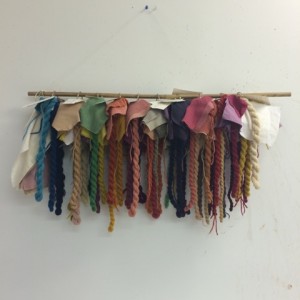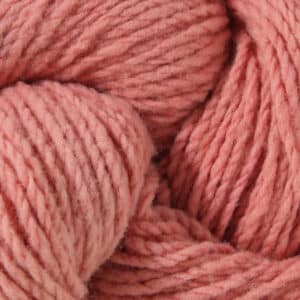Natural dyeing as a practice is equal parts chemistry, magic, and artistry. As well, sometimes accidents support colour exploration and one winds up with a colour completely unexpected and is pleasantly surprised. Of course, the opposite is true as well.
There are a few basic rules to follow when diving into the world of dyeing with natural sources. Keep good notes, do not use pots, utensils, etc for food after you used them for dyeing, learn about the plants you’re using and sample! Keep those samples, you might want them later for design or to test for lightfastness and wash fastness.
To capture colour from the natural world, you must start with clean scoured natural fibre. Typically, plant colours will not adhere to synthetics. Colour can then be utilized from extracts available for purchase or harvested from numerous wild native and invasive species gathered fresh or stored dry or sometimes fermented, including tree outer and inner bark, flowers, leaves, roots, particular insects, or even shellfish. Although it was a common practice to dye with lichens and some mosses in the past, I tend to lean away from this as it takes a very long time for these to grow and they, like all of the plants and animals in our habitat, have a substantial role to play in our biosphere. We can obtain great plant colour without harvesting these slow growing, earth purifying, caribou feeding, bird nest lining species.
Natural dye baths are typically classified as mordant dyes - the various and many dyes that require a chemical bonder, or "mordant", between the dye and the fibre, and substantive dyes - ones that do not require a mordant. Some natural dye baths, such as an indigo fermentation vat, are live, long lasting dye sources that can be continuously maintained.
There are a few rumours out there about the plant dye world that I work toward dispelling. One common untruth is that plant dyes are never wash or light fast. With proper mordanting and fibre handling, plant colour will last many years. Take for example, the many tapestries that were dyed and woven before synthetic dyes were accidentally invented in 1856. They grace us with bright, even, strong colour to this day. Take, for a great example, The Lady and the Unicorn, a series of six tapestries which hang in the Musée de Cluny in Paris, France. The intricate body of work was naturally dyed and woven in the 1500’s and, after five centuries, still exhibits powerful colour.

The Lady and the Unicorn: Sight
http://www.musee-moyenage.fr/collection/oeuvre/la-dame-a-lalicorne.html
Colour has been in hot pursuit since humans began making art, ancient petroglyphs, tapestries, pigment mixed into egg albumen or oil suspension and applied to expansive canvas, walls or ceilings. All had to come from plants before 1856 and many still cause us awe in these modern times when, among many other things, colour is quick and cheap to obtain. We, human kind, largely take this for granted.
Some might argue that plants will not offer up bright, powerful colour. Again, a falsity. An entire range of colour and depth of shade is available on wools, cotton, silk, linen, hemp, etc, etc.
Another unfortunate untruth is that natural dyes are massively harmful to the planet. While there are some old dye practices that were indeed harmful, the use of tin and chrome as mordants for example, modern study and research has granted us the knowledge to continue working with plant pigment in a way that is not detrimental. A priority of my own. These days, we dyers use mordants such as food grade Alum Sulphate for protein fibres and Alum Acetate for cellulose. Safe for us and safe for our life giving waterways.
ABOUT MEGAN SAMMS: Megan Samms is a weaver, knitter, hand spinner, and natural dyer who grew up in Millville, Codroy Valley, Newfoundland. Originally self-taught as a textile artist, she later studied at Kootenay School of the Arts in Nelson, BC. She is a regular contributor to the Guild of Canadian Weavers Quarterly Bulletin and a happy educator and advocate for the use of natural dyes in textile practices. To learn more about Megan Samms and her work, check out our blog, 2016 Fibre Artist Millstay - Megan Samms, or get in contact with Megan through her website www.megansamms.com.









